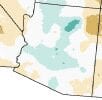1. America’ Deadliest Places To Ride Your Bike

The number of cyclists killed in motor-vehicle crashes nationwide hit 840 in 2016—the most recent data available—according to the National Highway Traffic Safety Administration. That was the most since 1991 and a 35% jump from 2010.
It’s great to travel green, but a range of likely reasons explains the rise in deaths, including more overall vehicular traffic and driver distractions, according to people who track transportation trends.
There are 3.5 bicycle deaths per 100,000 people between 2007 to 2016 in Phoenix; and, of the 50 largest metropolitan areas, Phoenix ranks 7th for the most bicycle deaths.
Texting by drivers remains a big problem, said Deborah Hersman, chief executive of the nonprofit National Safety Council. “Almost every state in the country has a texting ban, but we still find drivers are texting behind the wheel,” she said.
Alcohol is a factor. In 2015, 22% of fatally injured cyclists, and 12% of drivers in these crashes, had a blood-alcohol content level of at least 0.08, the legal limit for motorists in moJournal, Sept 26, 2018 and the National Highway Safety Administration.
2. Arizona Hopeful To Reach Colorado River Drought Deal.
Progress is being made in talks toward a set of agreements for cities, farmers and tribes to share in Colorado River water cutbacks, according to Arizona water officials.
The Arizona Republic reports that the state water officials also want to join in a larger proposed deal to prevent Lake Mead from dropping even further
Arizona water managers have been leading a series of biweekly meetings since July to work out details of the proposed drought-contingency plan.

Two officials leading the talks said they’re optimistic about finalizing agreements within Arizona in November so the state Legislature can sign off in January.
The proposed three-state plan would involve California, Arizona and Nevada jointly taking less water out of Lake Mead to give the reservoir a boost.
Based on Arizona’s priority system of water rights, complying with the plan without an additional adjustment would cut off water for farmers who depend on deliveries from the Central Arizona Project.
Tom Buschatzke, director of the state Department of Water Resources, said the idea is to reach an agreement that “more equitably spreads around the pain and the benefits” of the droughtcontingency plan in Arizona.
Central Arizona Project General Manager Ted Cooke also said he’s optimistic about finishing a deal during the next two months.
Water levels at Lake Mead are near historic lows and federal Bureau of Reclamation Commissioner Brenda Burman has urged representatives of Arizona, California and Nevada to finish up their negotiations on the drought-contingency plan.
Arizona officials have said the goal now isn’t to prevent a shortage, which is looking likely in little more than a year from now, but rather to prevent even more severe shortages.
Lake Mead is now just 38 percent full. Under the current rules, if the reservoir’s water level reaches 1,075 feet above sea level at the end of any year, the federal government will declare a shortage and supplies to Arizona and Nevada will be cut back.
Federal officials have said the region will narrowly escape a shortage in 2019 but that a shortage may be declared in 2020.
3. Halloween.
It is tradition in Ireland to eat barnbrack at Halloween time. What is it? Answer at end of newsletter.
4. Climas: Climate Summary:
Precipitation and Temperature: Precipitation in August ranged from much-below average to average in and from much-below average to above average in Arizona.


August temperatures were mostly above average across Arizona, with swaths of much-above average and isolated locations of record-warmest conditions. Most of the daily temperature anomalies (deviations above or below the average temperature)


have been warmer across the region since July 1. Summer (June-July-August) precipitation has varied considerably, from mostly average to below average in New Mexico, and from mostly average to above average in Arizona.
AZ Reservoirs

5.




WILL BE PRESENTING A FREE
Asbestos Regulatory Seminar
breakfast and lunch included
Come meet, share a meal and learn the basics from Maricopa County and instructors from the Asbestos Institute.
Phoenix, Arizona Friday, November 16, 2018 8:00am – 4:00pm
Location: ADOT Training Facility , 1130 N 22nd Ave Phoenix, AZ 85009

Answer to question No. 5: A fruitloaf.
